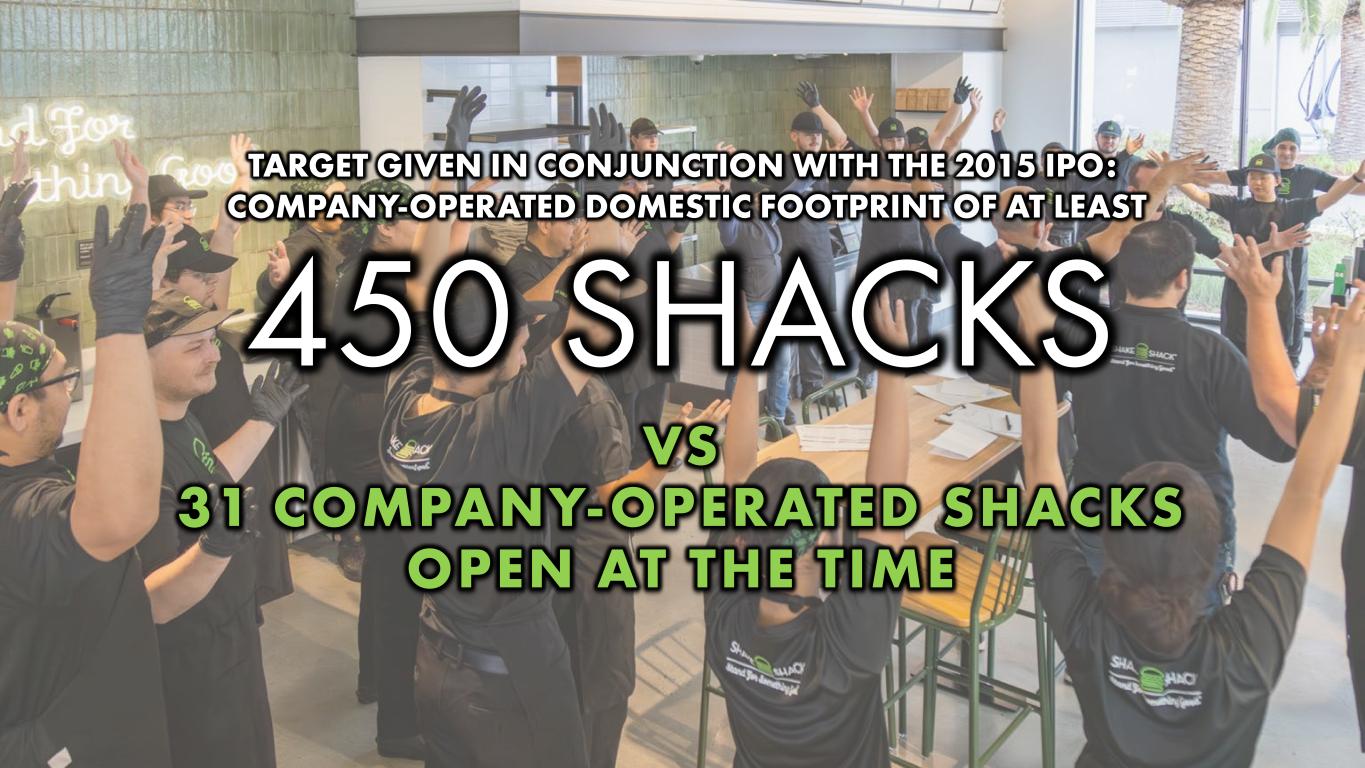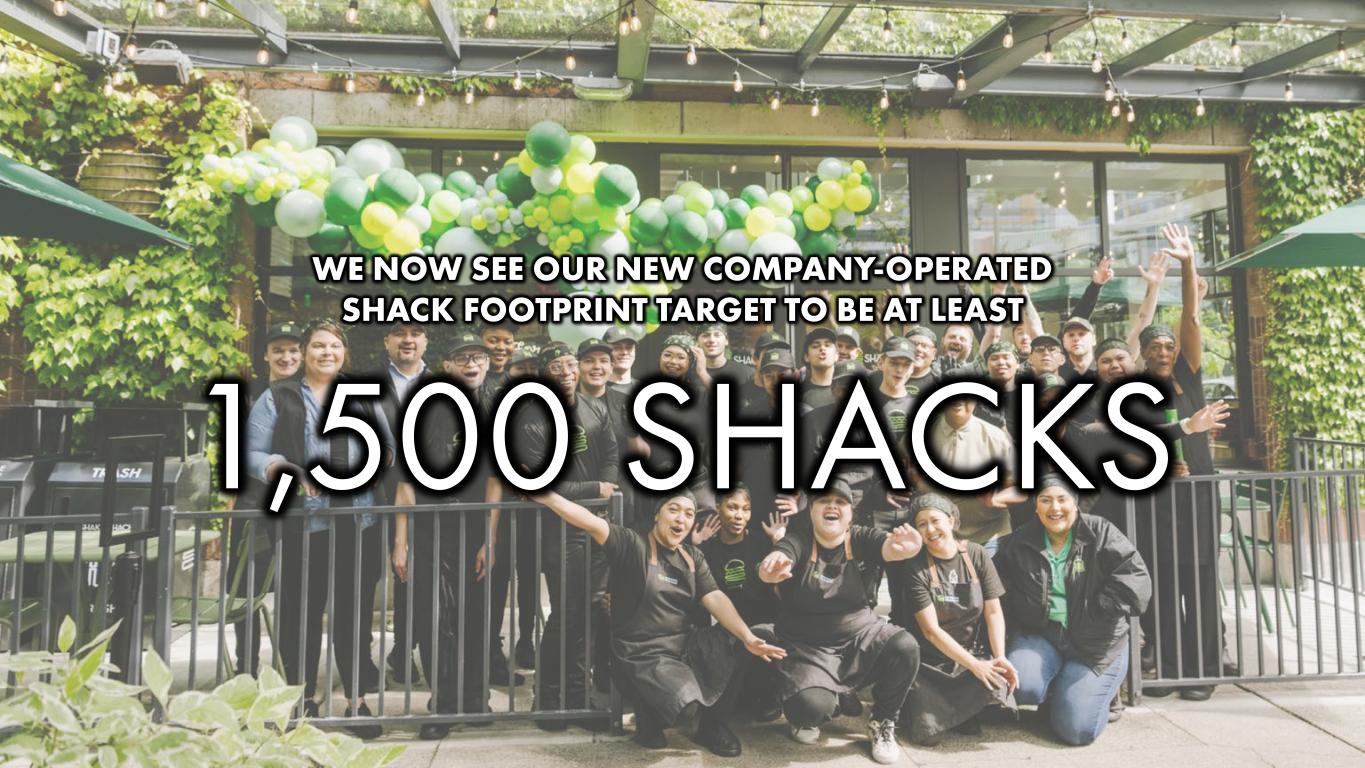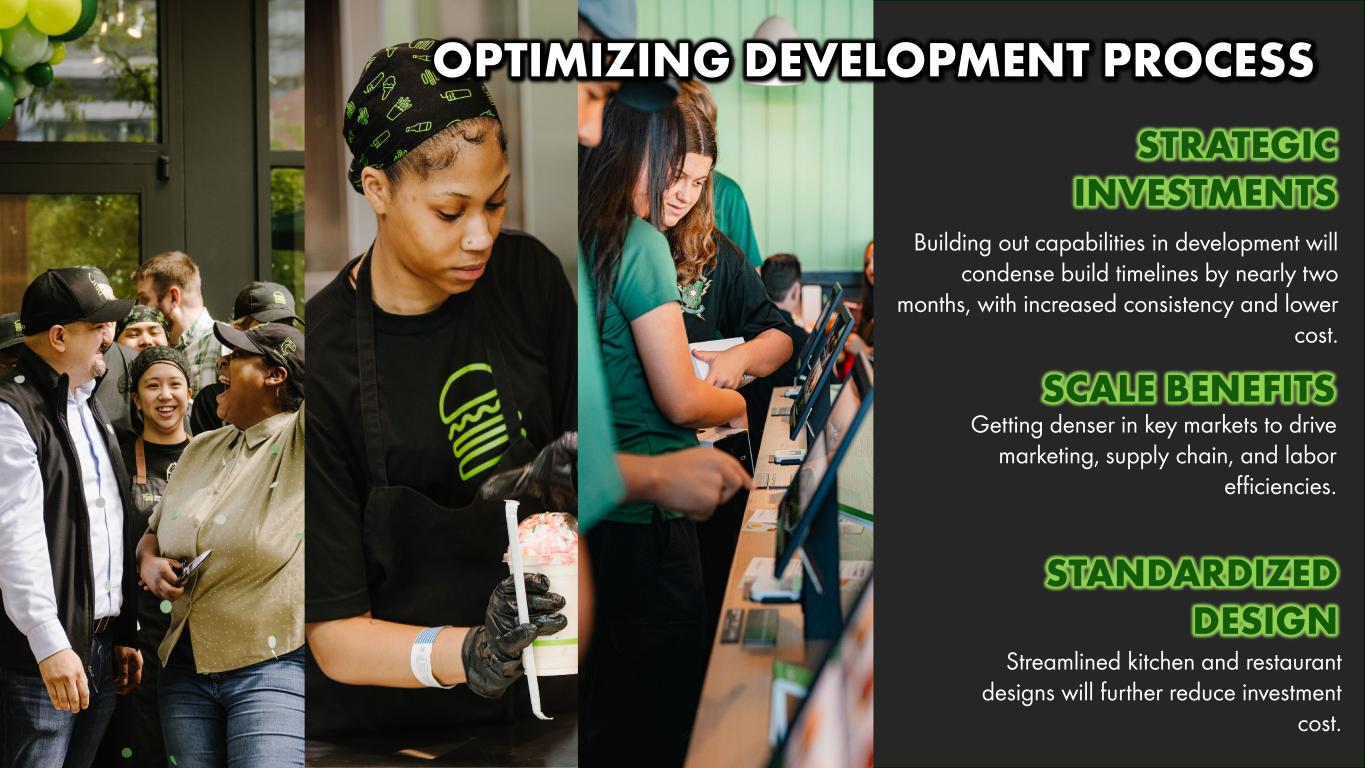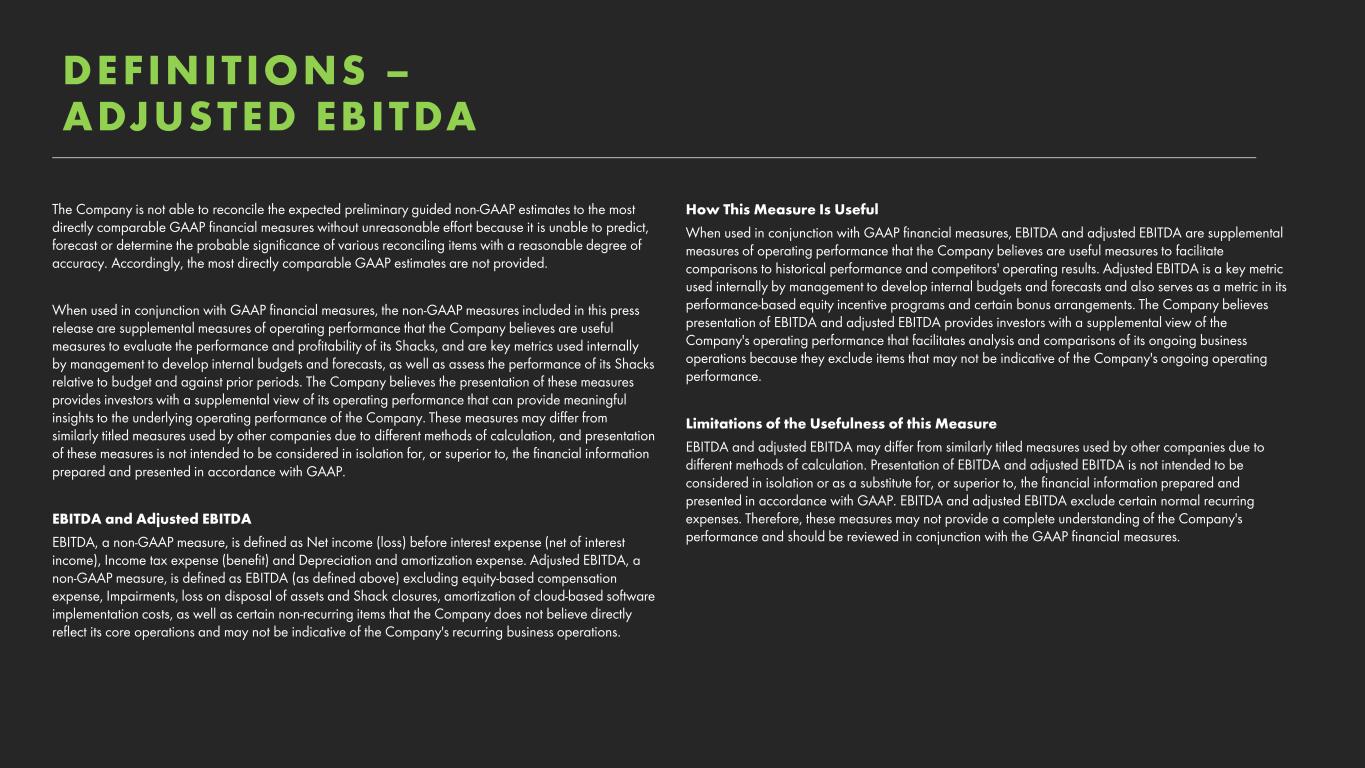
I C R C O N F E R E N C E J A N U A R Y 1 3 , 2 0 2 5

C AUTIONARY NOTE ON FORWARD -LOOKING STATEMENTS This presentation contains forward-looking statements, within the meaning of the Private Securities Litigation Reform Act of 1995, which are subject to known and unknown risks, uncertainties and other important factors that may cause actual results to be materially different from the statements made herein. All statements other than statements of historical fact included in this presentation are forward-looking statements, including, but not limited to, statements regarding the Company's long-term targets, strategic initiatives, preliminary expected financial results and operating performance for the fourth quarter of fiscal 2024 and the full-year fiscal 2024, guidance for the fourth quarter of fiscal 2024 and the full-year fiscal 2024 and for the full-year fiscal 2025, and the Company's strategic priorities and opportunities, including those around building a culture of leaders, optimizing operations, driving comp sales growth, building and operating Shacks with best-in-class returns, accelerating the licensed business, and investing in long-term strategic capabilities. Forward-looking statements discuss the Company’s current expectations, targets and projections relating to its financial position, results of operations, plans, objectives, future performance and business. You can identify forward-looking statements by the fact that they do not relate strictly to historical or current facts. These statements may include words such as "aim," "anticipate," "believe," "estimate," "expect," "forecast," "future," "intend," "likely," "outlook," "potential," "preliminary," "project," "projection," "plan," "seek," "targets," "may," "could," "would," "will," "should," "can," "can have," the negatives thereof and other similar expressions, and involve risks and uncertainties that could cause actual results or events to differ materially from the expectations discussed in this presentation. All forward-looking statements are expressly qualified in their entirety by these cautionary statements. Some of the factors which could cause results to differ materially from the Company’s expectations or cause the Company to not meet its long-term targets include the Company's ability to develop and open new Shacks on a timely basis, increased costs or shortages or interruptions in the supply and delivery of products, increased labor costs or shortages, inflationary pressures, the Company's management of its digital capabilities and expansion into delivery, as well as kiosk, drive-thru and multiple format investments, the Company's ability to maintain and grow sales at existing Shacks, risks relating to the restaurant industry generally, and the impact of any material weakness in the Company's internal controls over financial reporting identified in connection with the restatement described in the Company's Annual Report on Form 10-K filed with the Securities and Exchange Commission (the "SEC") on February 29, 2024 or otherwise. You should evaluate all forward-looking statements made in this presentation in the context of the risks and uncertainties disclosed in the Company’s Annual Report on Form 10-K for the fiscal year ended December 27, 2023 and the Company's other filings as filed with the SEC. All of the Company's SEC filings are available online at www.sec.gov, www.shakeshack.com or upon request from Shake Shack Inc. The forward-looking statements included in this presentation are made only as of the date hereof, and you should not place undue reliance on these forward-looking statements. There can be no assurance that the results or developments currently anticipated by the Company will be realized, or that the Company will achieve its potential long-term targets as updated and currently in place. The Company undertakes no obligation to publicly update or revise any forward-looking statement as a result of new information, future events or otherwise, except as otherwise required by law. In addition, the preliminary financial results set forth in this presentation are preliminary and unaudited, and these estimates are based on information currently available to the Company. While the Company believes these estimates are meaningful, they could differ from the actual results that the Company ultimately reports in its Annual Report on Form 10-K for the fiscal year ended December 25, 2024. The Company assumes no obligation and does not intend to update these estimates prior to filing its Form 10-K for the fiscal year ended December 25, 2024.

SHAKING IT UP IN 2024 & just getting started!

450 SHACKS VS 31 COMPANY- OPERATED SHACKS OPEN AT THE TIME TARGET GIVEN IN CONJUNCTION WITH THE 2015 IPO: COMPANY-OPERATED DOMESTIC FOOTPRINT OF AT LEAST

AVERAGE UNIT VOLUMES RESTAURANT-LEVEL PROFIT MARGIN 2 SHACK NET BUILD COST CASH-ON-CASH RETURNS $2.8M - $3.2M $4.0M 18% - 22% ~ 21% $1.5M - $2.5M $2.2M 30% - 33% > 33% TARGETS PROVIDED IN CONJUNCTION WITH SHAKE SHACK’S 2015 IPO: NEW COMPANY-OPERATED SHACK OPENINGS1 IN THE RANGE OF: VS TODAY: COMPANY-OPERATED SHACKS IN COMP BASE3 1. Data provided in the December 29, 2014 S-1 filing (SHAKE SHACK INC ). 2. Restaurant-level profit margin is a non-GAAP measure. See the definitions section of this presentation for the definition and details of this measure. 3. Comp base represents Company-operated Shacks open for 24 full fiscal months or longer as of P12 2024 excluding permanently closed Shacks. Average Unit Volume (AUV) and Restaurant-level profit margin represent full year 2024 unaudited results and are calculated as an average of all Shacks within the comp base. Cash-on-Cash returns are calculated by taking Year 3 AUV * Restaurant-level profit margin % / Net Build Cost.

1,500 SHACKS WE NOW SEE OUR NEW COMPANY-OPERATED SHACK FOOTPRINT TARGET TO BE AT LEAST

AVERAGE UNIT VOLUMES RESTAURANT-LEVEL PROFIT MARGIN 2 SHACK NET BUILD COST CASH-ON-CASH RETURNS 3 $2.8M - $4.0M 18% - 24% $1.5M - $3.0M AT LEAST 30% - 33% UPDATED SHACK-ONOMICS: NEW COMPANY-OPERATED SHACK OPENINGS1 IN THE RANGE OF: 1. Shack-onomics represents the range we generally expect to target on various metrics above for new Company-operated Shack openings, measured in the third year of operations. 2. Restaurant-level profit margin is a non-GAAP measure. See the definitions section of this presentation for the definition and details of this measure. 3. Cash-on-cash returns are measured with AUV and Restaurant-level operating margins in third full calendar year since opening.

THREE YEAR FINANCIAL TARGETS1 TOTAL REVENUE GROWTH SYSTEM-WIDE UNIT GROWTH RESTAURANT-LEVEL PROFIT MARGIN 2 ADJUSTED EBITDA GROWTH 2 LOW TEENS % LOW TEENS % AT LEAST APPROX 22% LOW – MID TEENS % 1. These targets reflect metrics for fiscal years 2025, 2026 and 2027. FY2025 has 53 weeks and these targets have been adjusted to exclude the 53rd week. 2. Restaurant-level profit margin and Adjusted EBITDA are non-GAAP measures. See the definitions section of this presentation for the definitions and details of these measures. IN THE RANGE OF:

1. BUILD A CULTURE OF LEADERS 2. OPTIMIZE RESTAURANT OPERATIONS 3. DRIVE COMP SALES BY INCREASING GUEST FREQUENCY 4. BUILD & OPERATE OUR SHACKS WITH BEST-IN-CLASS RETURNS 5. ACCELERATE OUR LICENSED BUSINESS 6. INVEST IN LONG-TERM STRATEGIC CAPABILITIES 2025 STRATEGIC PRIORITIES

BUILD A CULTURE OF LEADERS

The program’s core focus is on developing our team’s leadership capabilities and… High performing hourly team members are nominated and selected for Shift-Up, our 18-week intensive development program designed to accelerate career growth. … to set them up for success in leading, developing, and inspiring our Shack teams. DE VELOPIN G TALENT SHIFTING-UP OUR LEADERSHIP PIPELINE FOR GROWTH LE ADERSH IP BUSINE SS ACUMEN

OPTIMIZE RESTAURANT OPERATIONS

We are building strong teams through staffing, training and retention strategies to ensure a solid foundation … … so that we can deliver a great guest experience … … and optimize the long-term profitability of our Shacks. OPER ATIONS FOCUS PEOPLE PERFORMANCE PROFITS

We are optimizing our hourly staffing and enhancing training to provide a great guest experience. We are improving and standardizing our operating procedures and kitchen design. OPER ATIONS FOCUS LABOR MANAGEMENT ONE BEST WAY We are improving wait times, order accuracy, and profitability. FOCUS ON GUEST EXPERIENCE

DRIVE COMP SALES BY INCREASING GUEST FREQUENCY

DRIVING FREQUENCY IN 2025 MORE WAYS TO SURPRISE & DELIGHT OUR GUE STS OP TIMIZING OUR CORE MENU OFFERIN GS CULINARY INNOVATION

CONNECTING THE DOTS TO DELIVER HOSPITALITY & DRIVE FREQUENCY ACROSS OUR CHANNELS INVESTING IN GUEST RECOGNITION CAPABILITIES APP & WEB IN- SHACK KIOSK

18 BUILD & OPERATE OUR SHACKS WITH BEST-IN- CLASS RETURNS

With more formats than ever – including core, drive- thru, flagship, and small format - we can strategically optimize how we approach market development and enhance our cash-on-cash returns. Our internally developed data-driven site selection model is rooted in learnings from our 20-year track record of opening successful Shacks. This represents a material improvement in our development process. INTERNAL DATA & ANALYTICS MULTI FORMAT STRATEGY STRATEGIC APPROACH TO DEVELOPMENT We have 329 Company-operated Shacks domestically that have performed well and generated industry- leading returns across a wide variety of regions, and in both urban and suburban markets. PROVEN TRACK RECORD

Class of 2025 uses our new prototypes that allow us to open quicker and at a lower cost. Our internal design teams have aligned to packages that maintain a consistent brand expression and guest experience. CONTINUE TO REDUCE NEW SHACK BUILD COSTS Accelerating our development drives economies of scale and lowers build costs. $2.5M $2.6M $2.4M $2.2M 2022 2023 2024E 2025E Net Build Cost by Shack Class1 1. Net build costs exclude permanent Shack closures and include tenant allowance. W E E X P E C T F Y 2 0 2 5 N E W S H A C K B U I L D C O S T S T O B E ~ 1 5 % L E S S T H A N F Y 2 0 2 3 . We are optimizing investments across all formats, including drive- thru. PROCESS SCALE DESIGN FORMATS

Getting denser in key markets to drive marketing, supply chain, and labor efficiencies. Streamlined kitchen and restaurant designs will further reduce investment cost. Building out capabilities in development will condense build timelines by nearly two months, with increased consistency and lower cost. OPTIMIZING DEVELOPMENT PROCESS STRATEGIC INVESTMENTS SCALE BENEFITS STANDARDIZED DESIGN

FINANCIAL OVERVIEW

4QFY2024 P R E L I M I N A RY U N AU D I T E D R E S U LT S 1 COMPANY-OPERATED SHACK AUV $4.1M 1. These forward-looking projections are subject to known and unknown risks, uncertainties and other important factors that may cause actual results to be materially different from these projections. Factors that may cause such differences include those discussed in the Company's Form 10-K for the fiscal year ended December 27, 2023 and our Cautionary Note On Forward-Looking Statements herein. These forward-looking projections should be reviewed in conjunction with the consolidated financial statements and the section titled “Cautionary Note Regarding Forward-Looking Information” which form the basis of our assumptions used to prepare these forward-looking projections. You should not attribute undue certainty to these projections, and we undertake no obligation to revise or update any forward-looking information, except as required by law. 2. Restaurant-level profit margin and Adjusted EBITDA are non-GAAP measures. See the definitions section of this presentation for the definitions and details of these measures. TOTAL REVENUE $329M ~15% Y/Y SAME-SHACK SALES VS 2023 ~4.3% RESTAURANT-LEVEL PROFIT MARGIN2 ~22.7% 290 BPS EXPANSION Y/Y ADJUSTED EBITDA2 ~$46M +48% Y/Y

FY2024 P R E L I M I N A RY U N AU D I T E D R E S U LT S 1 1. These forward-looking projections are subject to known and unknown risks, uncertainties and other important factors that may cause actual results to be materially different from these projections. Factors that may cause such differences include those discussed in the Company's Form 10-K for the fiscal year ended December 27, 2023 and our Cautionary Note On Forward-Looking Statements herein. These forward-looking projections should be reviewed in conjunction with the consolidated financial statements and the section titled “Cautionary Note Regarding Forward-Looking Information” which form the basis of our assumptions used to prepare these forward-looking projections. You should not attribute undue certainty to these projections, and we undertake no obligation to revise or update any forward-looking information, except as required by law. 2. Restaurant-level profit margin and Adjusted EBITDA are non-GAAP measures. See the definitions section of this presentation for the definitions and details of these measures. 3. Gross new Shack openings TOTAL REVENUE $1.25b +15% Y/Y SYSTEM-WIDE SALES $1.9b ACROSS 579 SHACKS GLOBALLY RESTAURANT-LEVEL PROFIT MARGIN2 ~21.4% 150 BPS EXPANSION Y/Y ADJUSTED EBITDA2 ~$175m 33% Y/Y GROWTH 14% TOTAL REVENUE NEW SHACK OPENS SYSTEM-WIDE3 76 15% Y/Y UNIT GROWTH 43 CO-OPERATED OPENINGS 33 LICENSED OPENINGS

FY 2025 G U I DA N C E H I G H L I G H T S 1 TOTAL REVENUE $1.45b - $1.48b +16% - +18% Y/Y SAME-SHACK SALES vs 2024 ~3% RESTAURANT-LEVEL PROFIT MARGIN2 ~22.0% 60BPS EXPANSION Y/Y ADJUSTED EBITDA2 $200m – $210m +14% - +20% Y/Y 1. These forward-looking projections are subject to known and unknown risks, uncertainties and other important factors that may cause actual results to be materially different from these projections. Factors that may cause such differences include those discussed in the Company's Form 10-K for the fiscal year ended December 27, 2023 and our Cautionary Note On Forward-Looking Statements herein. These forward-looking projections should be reviewed in conjunction with the consolidated financial statements and the section titled “Cautionary Note Regarding Forward-Looking Information” which form the basis of our assumptions used to prepare these forward-looking projections. You should not attribute undue certainty to these projections, and we undertake no obligation to revise or update any forward-looking information, except as required by law. 2. Restaurant-level profit margin and Adjusted EBITDA are non-GAAP measures. See the definitions section of this presentation for the definitions and details of these measures. NEW SHACK OPENINGS SYSTEM-WIDE ~80 - 85 14% - 15% Y/Y Unit Growth

2024 PRELIMINARY UNAUDITED RESULTS1 Q4 2024 Preliminary Results Company-operated openings Licensed openings Total revenue Licensing revenue Same-Shack sales versus 2023 Restaurant-level profit margin Company-operated openings Licensed openings Total revenue Licensing revenue Same-Shack sales versus 2023 Restaurant-level profit margin General and administrative expenses, excluding one-time adjustments Equity-based compensation Depreciation and amortization expense Pre-opening costs Adjusted EBITDA3 Adjusted Pro Forma Tax Rate 19 9 $328.7m $12.1m ~4.3% ~22.7% 43 33 $1.25b $45m +3.6% ~21.4% $143m2, 11.4% of Total revenue Approximately $16m Approximately $102m Approximately $16m Approximately $175m Approximately 22.5% FY 2024 Preliminary Results 1. Fiscal fourth quarter and fiscal year 2024 guidance is derived from preliminary unaudited results, based on information currently available to the Company. While the Company believes these estimates are meaningful, they could differ from the actual results that the Company ultimately reports in its Annual Report on Form 10-K for the fiscal year ended December 25, 2024. 2. G&A excludes $3.1m of adjustments from 1Q24, $2.0m of adjustments from 2Q24, $0.8m of adjustments from 3Q24 and $0.8m of adjustments from 4Q24. Including these expenses, G&A guidance would be $149m. G&A includes approximately $14m of the approximately $16m total Equity-based compensation. 3. Adjusted EBITDA is a non-GAAP measure. See the definitions section of this presentation for the definition and details of this measures. 4. See the definitions section of this presentation for the definition and details for Adjusted Pro Forma Tax Rate.

F Y 2025 Guidance1 Company-operated openings Licensed openings Total revenue Licensing revenue Same-Shack sales versus 2024 Restaurant-level profit margin General and administrative expenses Equity-based compensation Depreciation and amortization expense Pre-opening costs Net income Adjusted EBITDA2 Adjusted Pro Forma Tax Rate3 Approximately 45 ~ 35 - 40 ~$1.45b – $1.48b $49m - $51m Approximately +3.0% Approximately 22.0% Approximately 11.5% of Total revenue Approximately $22m $108m - $112m Approximately $17m $45m - $60m $200m - $210m Approximately 24% - 25% 1. These forward-looking projections are subject to known and unknown risks, uncertainties and other important factors that may cause actual results to be materially different from these projections. Factors that may cause such differences include those discussed in the Company's Annual Report on Form 10-K for the fiscal year ended December 27, 2023 and our Cautionary Note On Forward-Looking Statements herein. These forward-looking projections should be reviewed in conjunction with the consolidated financial statements and the section titled “Cautionary Note Regarding Forward-Looking Information” which form the basis of our assumptions used to prepare these forward-looking projections. You should not attribute undue certainty to these projections, and we undertake no obligation to revise or update any forward-looking information, except as required by law. 2. Adjusted EBITDA is a non-GAAP measure. See the definitions section of this presentation for the definition and details of this measures. 3. See the definitions section of this presentation for the definition and details for Adjusted Pro Forma Tax Rate.

THANK YOU

DEFINITIONS – RESTAUR ANT-LEVEL PROFIT The Company is not able to reconcile the expected preliminary guided non-GAAP estimates to the most directly comparable GAAP financial measures without unreasonable effort because it is unable to predict, forecast or determine the probable significance of various reconciling items with a reasonable degree of accuracy. Accordingly, the most directly comparable GAAP estimates are not provided. When used in conjunction with GAAP financial measures, the non-GAAP measures included in this press release are supplemental measures of operating performance that the Company believes are useful measures to evaluate the performance and profitability of its Shacks, and are key metrics used internally by management to develop internal budgets and forecasts, as well as assess the performance of its Shacks relative to budget and against prior periods. The Company believes the presentation of these measures provides investors with a supplemental view of its operating performance that can provide meaningful insights to the underlying operating performance of the Company. These measures may differ from similarly titled measures used by other companies due to different methods of calculation, and presentation of these measures is not intended to be considered in isolation for, or superior to, the financial information prepared and presented in accordance with GAAP. Restaurant-Level Profit “Restaurant-level profit,” a non-GAAP measure, formerly referred to as Shack-level operating profit, is defined as Shack sales less Shack-level operating expenses, which include Food and paper costs, Labor and related expenses, Other operating expenses, and Occupancy and related expenses. Restaurant-Level Profit Margin "Restaurant-level profit margin," a non-GAAP measure, formerly referred to as Shack-level operating profit margin, is defined as Shack sales less Shack-level operating expenses, including Food and paper costs, Labor and related expenses, Other operating expenses and Occupancy and related expenses as a percentage of Shack sales. How This Measure Is Useful When used in conjunction with GAAP financial measures, Restaurant-level profit and Restaurant-level profit margin are supplemental measures of operating performance that the Company believes are useful measures to evaluate the performance and profitability of its Shacks. Additionally, Restaurant-level profit and Restaurant-level profit margin are key metrics used internally by management to develop internal budgets and forecasts, as well as assess the performance of its Shacks relative to budget and against prior periods. It is also used to evaluate team member compensation as it serves as a metric in certain performance-based team member bonus arrangements. The Company believes presentation of Restaurant- level profit and Restaurant-level profit margin provides investors with a supplemental view of its operating performance that can provide meaningful insights to the underlying operating performance of the Shacks, as these measures depict the operating results that are directly impacted by the Shacks and exclude items that may not be indicative of, or are unrelated to, the ongoing operations of the Shacks. It may also assist investors to evaluate the Company's performance relative to peers of various sizes and maturities and provides greater transparency with respect to how management evaluates the business, as well as the financial and operational decision-making. Limitations of the Usefulness of this Measure Restaurant-level profit and Restaurant-level profit margin may differ from similarly titled measures used by other companies due to different methods of calculation. Presentation of Restaurant-level profit and Restaurant-level profit margin is not intended to be considered in isolation or as a substitute for, or superior to, the financial information prepared and presented in accordance with GAAP. Restaurant-level profit excludes certain costs, such as General and administrative expenses and Pre-opening costs, which are considered normal, recurring cash operating expenses and are essential to support the operation and development of the Company's Shacks. Therefore, this measure may not provide a complete understanding of the Company's operating results as a whole and Restaurant-level profit and Restaurant- level profit margin should be reviewed in conjunction with the Company’s GAAP financial results.

DEFINITIONS – ADJUSTED EBITDA The Company is not able to reconcile the expected preliminary guided non-GAAP estimates to the most directly comparable GAAP financial measures without unreasonable effort because it is unable to predict, forecast or determine the probable significance of various reconciling items with a reasonable degree of accuracy. Accordingly, the most directly comparable GAAP estimates are not provided. When used in conjunction with GAAP financial measures, the non-GAAP measures included in this press release are supplemental measures of operating performance that the Company believes are useful measures to evaluate the performance and profitability of its Shacks, and are key metrics used internally by management to develop internal budgets and forecasts, as well as assess the performance of its Shacks relative to budget and against prior periods. The Company believes the presentation of these measures provides investors with a supplemental view of its operating performance that can provide meaningful insights to the underlying operating performance of the Company. These measures may differ from similarly titled measures used by other companies due to different methods of calculation, and presentation of these measures is not intended to be considered in isolation for, or superior to, the financial information prepared and presented in accordance with GAAP. EBITDA and Adjusted EBITDA EBITDA, a non-GAAP measure, is defined as Net income (loss) before interest expense (net of interest income), Income tax expense (benefit) and Depreciation and amortization expense. Adjusted EBITDA, a non-GAAP measure, is defined as EBITDA (as defined above) excluding equity-based compensation expense, Impairments, loss on disposal of assets and Shack closures, amortization of cloud-based software implementation costs, as well as certain non-recurring items that the Company does not believe directly reflect its core operations and may not be indicative of the Company's recurring business operations. How This Measure Is Useful When used in conjunction with GAAP financial measures, EBITDA and adjusted EBITDA are supplemental measures of operating performance that the Company believes are useful measures to facilitate comparisons to historical performance and competitors' operating results. Adjusted EBITDA is a key metric used internally by management to develop internal budgets and forecasts and also serves as a metric in its performance-based equity incentive programs and certain bonus arrangements. The Company believes presentation of EBITDA and adjusted EBITDA provides investors with a supplemental view of the Company's operating performance that facilitates analysis and comparisons of its ongoing business operations because they exclude items that may not be indicative of the Company's ongoing operating performance. Limitations of the Usefulness of this Measure EBITDA and adjusted EBITDA may differ from similarly titled measures used by other companies due to different methods of calculation. Presentation of EBITDA and adjusted EBITDA is not intended to be considered in isolation or as a substitute for, or superior to, the financial information prepared and presented in accordance with GAAP. EBITDA and adjusted EBITDA exclude certain normal recurring expenses. Therefore, these measures may not provide a complete understanding of the Company's performance and should be reviewed in conjunction with the GAAP financial measures.

DEFINITIONS – PRO FORMA EFFECTIVE TA X R ATE The Company is not able to reconcile the expected preliminary guided non-GAAP estimates to the most directly comparable GAAP financial measures without unreasonable effort because it is unable to predict, forecast or determine the probable significance of various reconciling items with a reasonable degree of accuracy. Accordingly, the most directly comparable GAAP estimates are not provided. When used in conjunction with GAAP financial measures, the non-GAAP measures included in this press release are supplemental measures of operating performance that the Company believes are useful measures to evaluate the performance and profitability of its Shacks, and are key metrics used internally by management to develop internal budgets and forecasts, as well as assess the performance of its Shacks relative to budget and against prior periods. The Company believes the presentation of these measures provides investors with a supplemental view of its operating performance that can provide meaningful insights to the underlying operating performance of the Company. These measures may differ from similarly titled measures used by other companies due to different methods of calculation, and presentation of these measures is not intended to be considered in isolation for, or superior to, the financial information prepared and presented in accordance with GAAP. Adjusted Pro Forma Effective Tax Rate Adjusted pro forma effective tax rate represents the effective tax rate assuming the full exchange of all outstanding SSE Holdings, LLC membership interests ("LLC Interests") for shares of Class A common stock, adjusted for certain non-recurring items that the Company does not believe are directly related to its core operations and may not be indicative of its recurring business operations. How This Measure Is Useful When used in conjunction with GAAP financial measures, adjusted pro forma effective tax rate is a supplemental measure of operating performance that the Company believes is useful to evaluate its performance period over period and relative to its competitors. By assuming the full exchange of all outstanding LLC Interests, the Company believes this measure facilitates comparisons with other companies that have different organizational and tax structures, as well as comparisons period over period because it eliminates the effect of any changes in effective tax rate driven by increases in its ownership of SSE Holdings, which are unrelated to the Company's operating performance, and excludes items that are non- recurring or may not be indicative of ongoing operating performance. Limitations of the Usefulness of this Measure Adjusted pro forma effective tax rate may differ from similarly titled measures used by other companies due to different methods of calculation. Presentation of adjusted pro forma effective tax rate should not be considered an alternative to effective tax rate, as determined under GAAP. While this measure is useful in evaluating the Company's performance, it does not account for the effective tax rate attributable to the non-controlling interest holders and therefore does not provide a complete understanding of effective tax rate. Adjusted pro forma effective tax rate should be evaluated in conjunction with GAAP financial results.

CONTACT INFORMATION INVESTOR CONTACT Melissa Calandruccio, ICR Michelle Michalski, ICR (844) Shack-04 (844-742-2504) investor@shakeshack.com MEDIA CONTACT Meg Davis, Shake Shack mdavis@shakeshack.com The image part with relationship ID rId7 was not found in the file. 32































